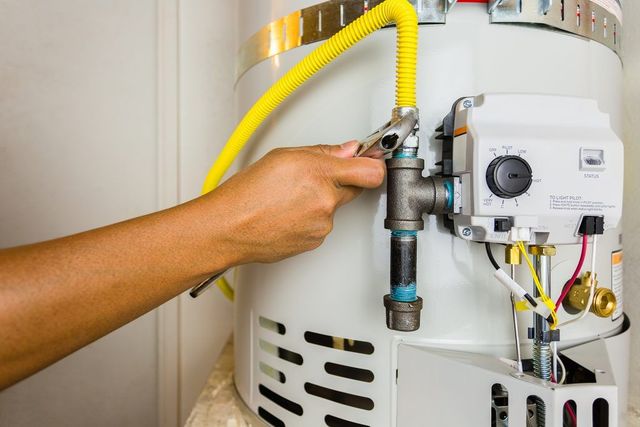Ways to Maintain Your Home's Hot Water System in Good ConditionEasy Ways to Maintain Your Home's Hot Water System Properly
Ways to Maintain Your Home's Hot Water System in Good ConditionEasy Ways to Maintain Your Home's Hot Water System Properly
Blog Article
We have unearthed this article involving How to Maintain a Hot Water Heater in a Few Simple Steps down the page on the internet and thought it made good sense to write about it with you on my blog.

Hot water is essential for daily comfort, whether it's for a refreshing shower or washing dishes. To ensure your warm water system runs successfully and lasts much longer, normal maintenance is key. This article supplies useful pointers and understandings on how to keep your home's warm water system to prevent disruptions and costly repairs.
Introduction
Preserving your home's hot water system might seem difficult, but with a couple of basic steps, you can guarantee it operates efficiently for many years to come. This overview covers whatever from recognizing your hot water system to do it yourself upkeep ideas and knowing when to call in specialist aid.
Relevance of Maintaining Your Hot Water System
Routine upkeep not only expands the lifespan of your warm water system but likewise guarantees it operates effectively. Ignoring upkeep can bring about decreased efficiency, higher energy expenses, and also premature failure of the system.
Indications Your Warm Water System Requirements Maintenance
Understanding when your warm water system requires interest can protect against major issues. Keep an eye out for indications such as inconsistent water temperature level, unusual sounds from the heating unit, or rusty water.
Understanding Your Warm Water System
Before diving right into maintenance tasks, it's valuable to comprehend the basic parts of your hot water system. Generally, this consists of the water heater itself, pipes, anode poles, and temperature level controls.
Month-to-month Upkeep Tasks
Routine regular monthly checks can help catch small problems prior to they escalate.
Flushing the Water Heater
Purging your hot water heater eliminates debris buildup, enhancing efficiency and prolonging its life.
Monitoring and Replacing Anode Rods
Anode rods protect against deterioration inside the storage tank. Evaluating and replacing them when broken is important.
Inspecting and Changing Temperature Setups
Readjusting the temperature setups makes sure optimal efficiency and safety and security.
DIY Tips for Maintenance
You can execute several upkeep jobs on your own to keep your hot water system in top condition.
Checking for Leakages
Frequently check pipelines and links for leakages, as these can cause water damage and higher bills.
Testing Stress Alleviation Valves
Examining the stress safety valve guarantees it works correctly and avoids excessive pressure buildup.
Protecting Pipelines
Shielding warm water pipelines minimizes warmth loss and can conserve power.
When to Call an Expert
While do it yourself upkeep is advantageous, some issues call for specialist proficiency.
Facility Issues Needing Specialist Aid
Instances consist of major leaks, electric troubles, or if your hot water heater is constantly underperforming.
Regular Specialist Maintenance Advantages
Expert upkeep can consist of complete assessments, tune-ups, and making certain compliance with safety standards.
Final thought
Routine upkeep of your home's warm water system is necessary for performance, longevity, and price financial savings. By adhering to these pointers and knowing when to seek expert assistance, you can make sure a trustworthy supply of hot water without unexpected interruptions.
Water Heater Maintenance: The Basics
Maintaining your water heater will ensure it operates efficiently and has a longer lifespan. Neglecting regular maintenance can lead to costly repairs and an even bigger chunk of your savings if you have to replace it sooner than necessary. But there’s good news: Most water heater maintenance tasks are relatively simple and easy for homeowners with basic DIY skills.
Flush the Water Heater
Over time, sediment and minerals can build up in the tank, reducing its efficiency and potentially causing damage. To flush the tank, turn off the power or gas supply, attach a hose to the drain valve near the bottom and open the valve to drain the water until it runs clear. Ideally, flush the tank annually.
Replace the Anode Rod
The anode rod is a sacrificial metal rod that helps prevent corrosion inside the tank. Inspect and replace it every three to five years or per the manufacturer's recommendation. To replace the anode rod, turn off the power or gas supply, drain a few gallons of water from the tank, unscrew the old rod and replace it with a new one. If the anode rod is significantly corroded or covered in calcium buildup, it's a sign the water heater may need to be replaced soon.
Tune-Up
A yearly tune-up can help identify potential issues and ensure your water heater operates at peak efficiency. This typically involves checking the thermostat, burner assembly (for gas heaters) and any other components specified by the manufacturer. During a tune-up, the technician may also clean the burner and adjust the pilot light (for gas heaters) or examine the heating elements (for electric heaters).
How to Maintain Your Water Heater
Insulate the tank. Insulating the tank can improve energy efficiency and reduce heat loss, saving you money on energy bills. You can purchase precut insulation blankets designed specifically for water heaters or use standard fiberglass insulation wrapped securely around the tank. Check the temperature. The recommended water temperature for most households is around 120 degrees Fahrenheit (49 degrees Celsius). Higher temperatures can increase energy costs and potentially cause scalding. Use a kitchen thermometer to check the temperature at the faucet nearest the water heater. Monitor water pressure. Excessive water pressure can strain the water heater and cause leaks or even tank failure. Install a pressure-reducing valve if necessary. The ideal water pressure range is between 60 and 70 PSI (pounds per square inch). Test the temperature and pressure (T&P) relief valve. The T&P relief valve is a safety feature that releases pressure if the tank gets too hot or the pressure builds up too high. Test it annually by lifting the lever and allowing a small amount of water to release. Replace the valve if it doesn't release water or reseal properly. Check for leaks. Regularly inspect the tank, pipes and fittings for leaks or corrosion. Deal with issues promptly to prevent further damage. Even a small leak can lead to significant water damage over time. Consider a tankless water heater. If your traditional tank-style water heater is nearing the end of its lifespan ( typically 10 years), consider replacing it with a tankless water heater. These units heat water on demand, reducing standby energy losses and potentially saving you money on your energy bills. Schedule professional maintenance. While homeowners can perform many water heater maintenance tasks, it's still a good idea to schedule professional maintenance every few years. A plumber or HVAC technician can thoroughly inspect the unit, identify potential issues and ensure it operates safely and efficiently. https://www.homeserve.com/en-us/blog/home-improvement/hot-water-heater-maintanence/

I have been very intrigued by How to Maintain Your Water Heater & Prolong its Life and I am assuming you enjoyed the new page. Enjoyed reading our blog? Please share it. Help somebody else locate it. Thanks so much for your time invested reading it.
Book Report this page